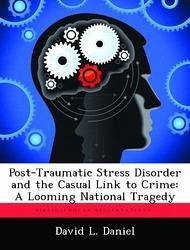Soldiers returning from service in the Global War on Terror may experience a high incidence of varying degrees of Post-traumatic Stress Disorder (PTSD). As such, the military leadership and society in general must, therefore, develop an in-depth understanding of PTSD and the effects that a high occurrence of this disorder in veterans and serving personnel will have on our society. The purpose of this paper is to investigate if there is a correlation between PTSD and criminal behavior in soldiers that have been incarcerated after returning from the GWOT and to determine the obligations of the U.S. government/DoD to prevent, treat, and/or mitigate the problem. This study includes data collected, examined and analyzed from three primary sources. First, an existing study on PTSD and criminal behavior by James J. Collins and Susan L. Bailey which examines the correlation between PTSD and criminal behavior primarily in 1140 non-veteran North Carolina inmates. This study is included to establish whether a general causal link exists between PTSD and an incidence of violent criminal behavior. Next, statistical data compiled by the Bureau of Justice Statistics (BJS) section of the Office of Justice Programs, U.S. Department of Justice (DoJ) is analyzed for trends in incarceration rates among veterans in Federal and State correctional facilities. The BJS data is included to examine whether the incarceration rates of veterans for violent criminal offenses has peaked during and after periods of war. Finally, this study will look closely at aggregate exempt inmate data recently compiled by the administrative and mental health staff of the United States Disciplinary Barracks, Fort Leavenworth, Kansas (USDB). The data from the USDB is part of an ongoing survey of the inmates (n=440) to determine the incidence of PTSD and mental health disorders within the prisoner population for treatment purposes and program analysis. This paper explores the history of PTSD in previous conflicts,
Hinweis: Dieser Artikel kann nur an eine deutsche Lieferadresse ausgeliefert werden.
Hinweis: Dieser Artikel kann nur an eine deutsche Lieferadresse ausgeliefert werden.








